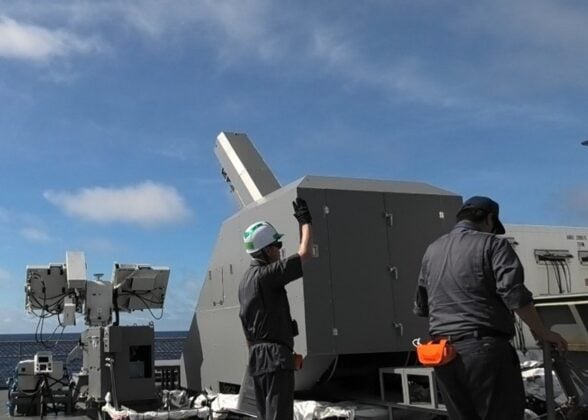Japan successfully tests ship-based railgun

Japan’s Acquisition, Technology & Logistics Agency (ATLA) has announced the successful completion of offshore firing trials using an electromagnetic railgun.
The announcement was made via ATLA’s official X account on September 10.
According to the statement, the tests were conducted from June through early July aboard the Maritime Self-Defense Force’s test vessel Asuka. ATLA confirmed that the railgun, mounted on the ship, successfully carried out long-range firings and accurately engaged a target vessel during the trial.
The agency released four images taken during the tests, showing the railgun in action, including a moment when the weapon was aimed at a surface target.
The railgun, powered entirely by electrical energy, fires projectiles at extreme velocity. Traditional tank guns typically fire at an initial speed of 1,750 meters per second. In contrast, ATLA stated the railgun used in this test achieved muzzle velocities exceeding 2,500 meters per second. The weapon’s design allows for adjustments in projectile velocity, range, and destructive power—all without the need for chemical propellants.

Because the railgun uses smaller projectiles and does not rely on explosive warheads, it is harder to detect and intercept. This could offer a distinct advantage in contested environments where counter-battery fire or missile interception is a concern.
ATLA previously highlighted this system during a 2023 demonstration, which it described at the time as the first successful ship-based firing of a railgun anywhere in the world. This summer’s test builds on that milestone and is expected to be featured in greater detail at the upcoming ATLA Symposium, scheduled for November 11–12.
In the broader context of Japan’s defense posture, the railgun is seen as part of a layered response to regional threats, including ballistic missile defense. ATLA has framed the system as a future solution to intercept high-speed airborne or naval targets and to serve as a long-range precision strike capability at sea.
Japan’s focus on electromagnetic weaponry is aligned with its wider effort to modernize the capabilities of the Self-Defense Forces. While the U.S. Navy previously shelved its own railgun program, Japan’s continued work in this field may help revive international interest in weapon systems that rely on electricity rather than explosives.





